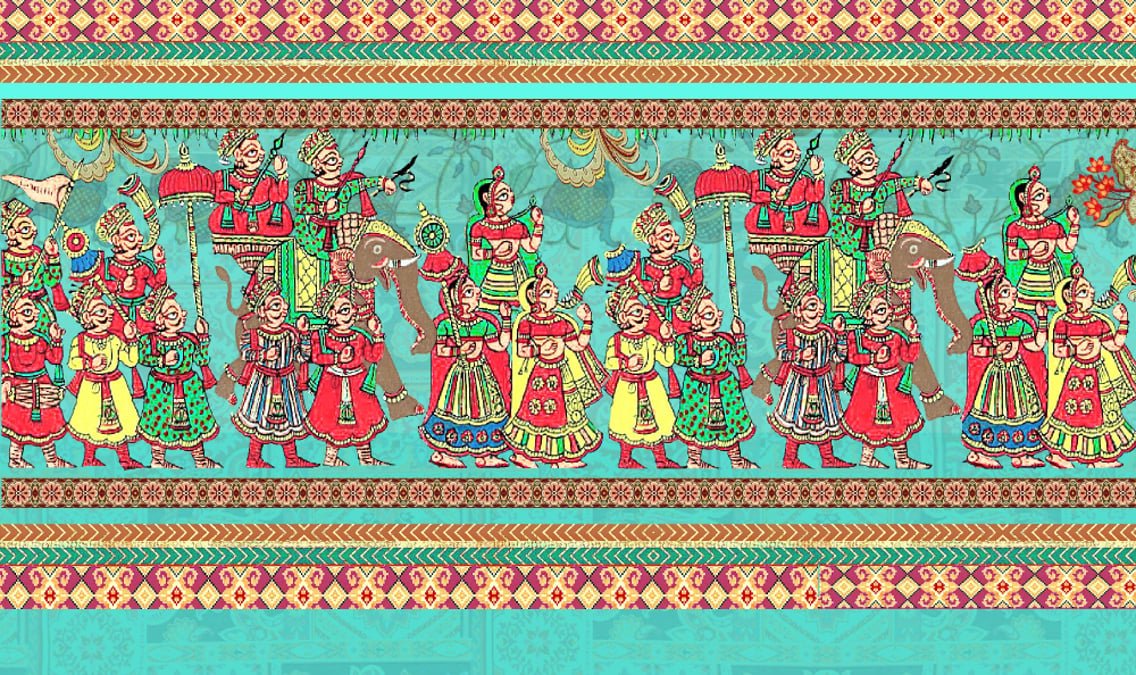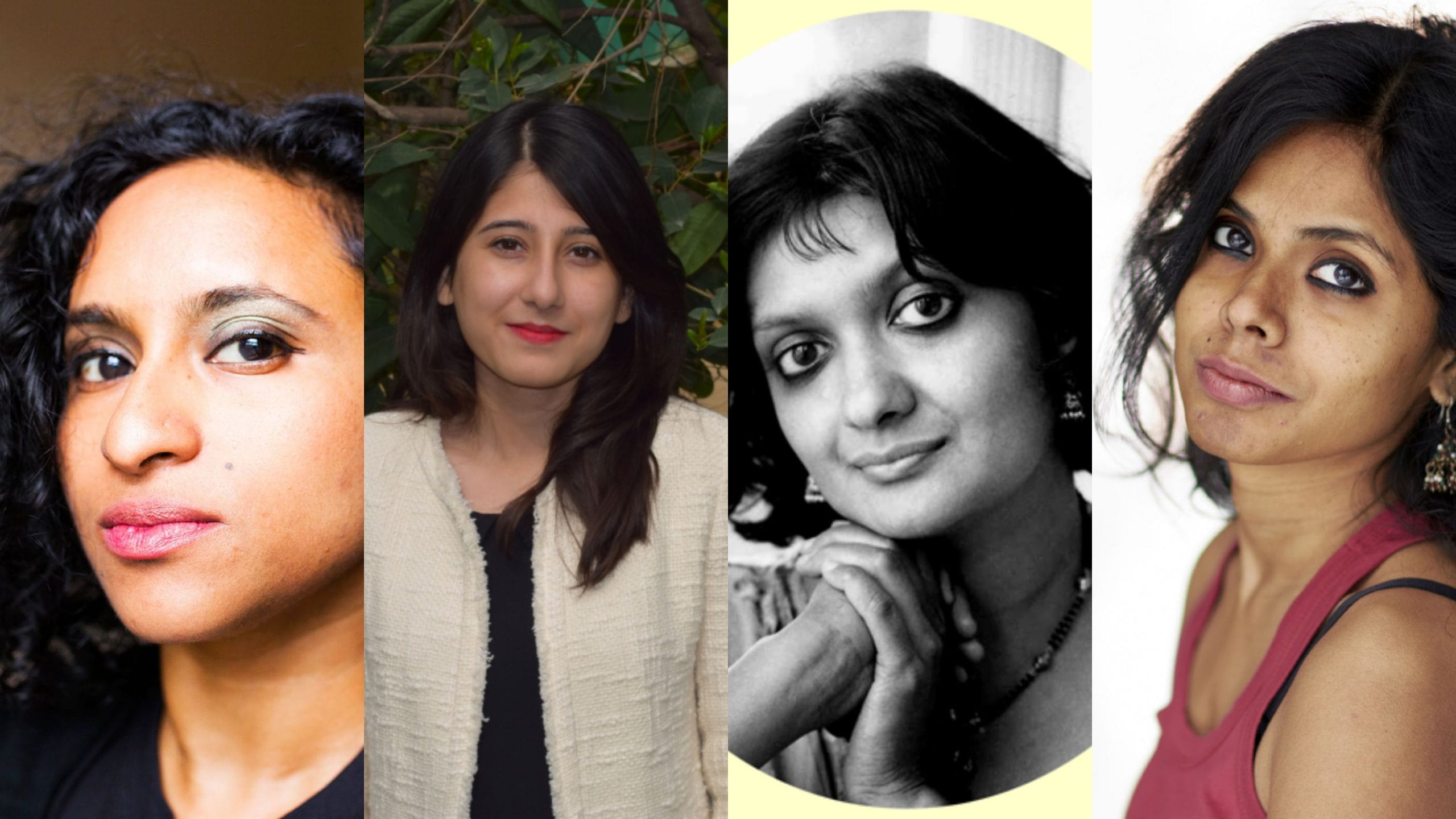On a bright winter morning in Delhi, 37-year-old Pushpa Devi could be seen busily attending to her 5-year-old son near her family’s Madhubani art exhibition at Dilli Haat. Pushpa is among the thousands of residents of Bihar’s Mithila region who are deeply rooted in the cultural tradition of creating Madhubani paintings.
Pushpa is among the thousands of residents of Bihar’s Mithila region who are deeply rooted in the cultural tradition of creating Madhubani paintings.
For her, venturing out to these exhibitions represents a significant journey – one that has allowed her to break free from her shell and look forward to new opportunities.
‘Bahar jayenge, tabhi to agey badhenge (We’ll step out, that’s how we’ll progress),’ expressed Pushpa.
From being painted on mud walls to being showcased in museums globally, acknowledgment for this folk-art form has been built by burning the midnight oil.
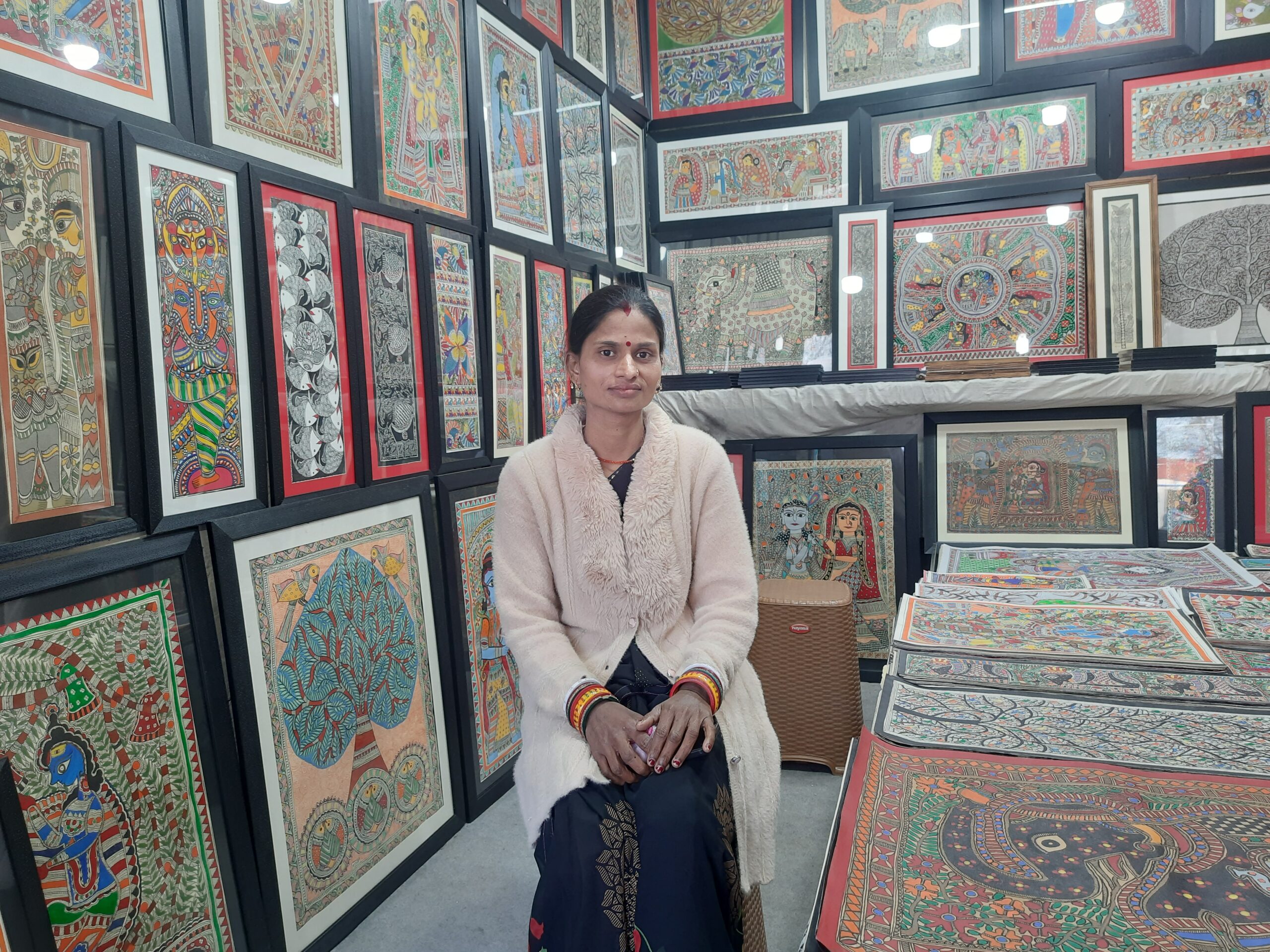
Recently, the Padma Awards 2024 added honour to the realm of Madhubani painting by recognising the exceptional contribution of Shanti Devi Paswan and Shivan Paswan. This husband-wife duo, hailing from Bihar, have become integral parts of the art form’s legacy. Despite facing societal challenges, they have elevated the status of Godna painting (category of Madhubani painting), particularly in depicting Dusadh legend epics, and have empowered over 20,000 women through their training initiatives.
Tracing the history of Madhubani painting
Securing two shops at Dilli Haat for 15 days, Pushpa and her family were content. Craftsmen from all corners of India are granted stalls at Delhi Haat for the same duration, providing them with a platform to showcase their handicrafts.
At the main counter of the shop, Bhaskar Jha, a 24-year-old member of Pushpa’s family, suggested his cousin brother to take a lunch break.
After completing his graduation, Bhaskar, a resident of Bihar’s Madhubani district, contributed to his family’s Madhubani art tradition and also its business.
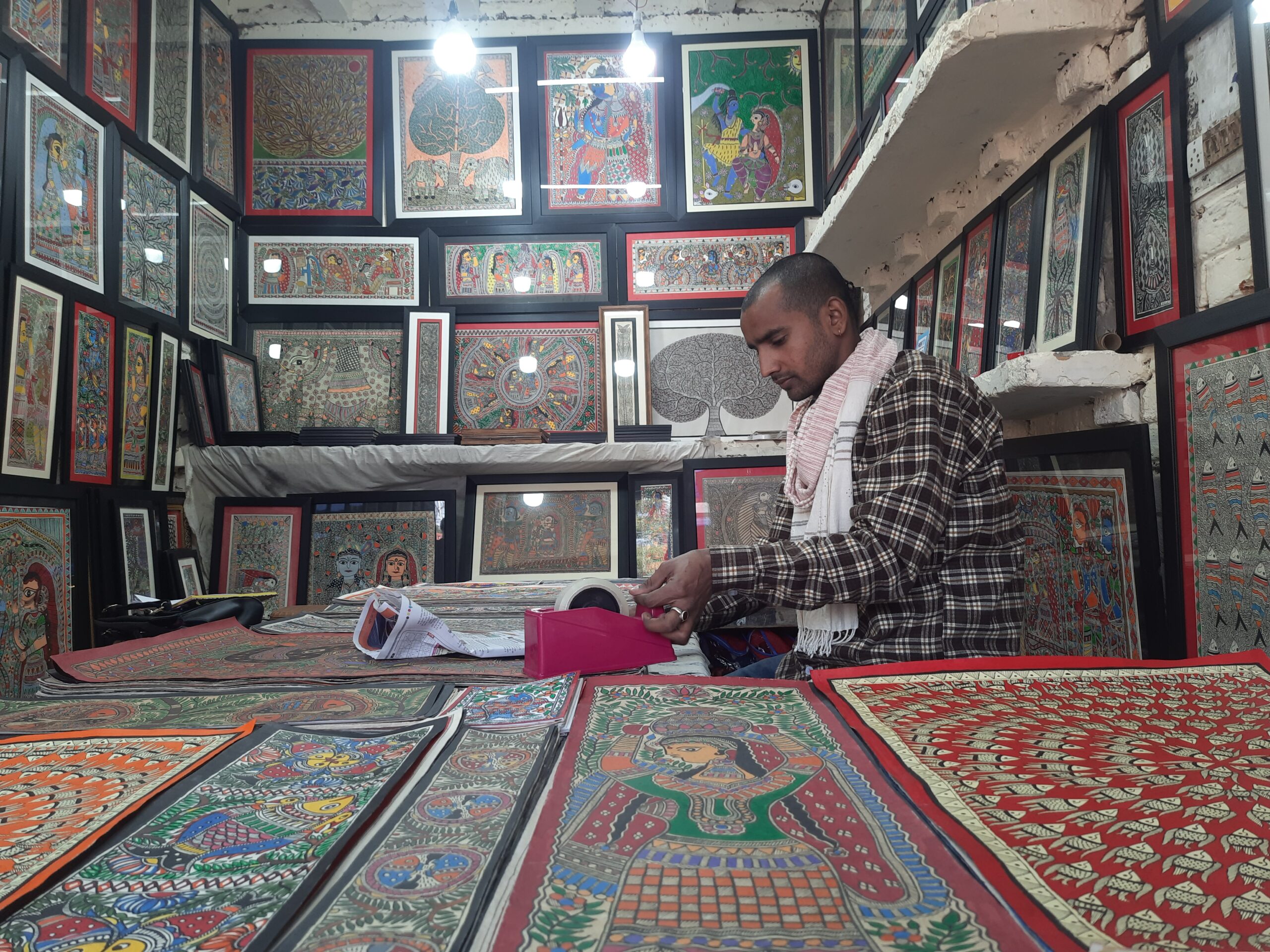
Madhubani paintings originated in the Mithila region of Bihar. The Hindu epic Ramayana has some of the earliest mentions of this art genre when King Janaka, the father of Sita, commissions his painters to create Madhubani paintings for his daughter’s wedding.
The paintings started to adorn the houses in the region as the knowledge was carried through generations. Women practiced this art on the walls of their homes. Their ideas, aspirations, and thoughts were frequently depicted in their paintings.
This art gained wider recognition after natural disasters like the 1934 earthquake in Mithila exposed it to scholars like W.B. Archer, who documented its significance. Subsequently, initiatives like those from the former Chair of the All-India Handicrafts Board (AIHB) Pupul Jayakar’s support during the 1966-67 drought propelled Madhubani paintings into commercial success.
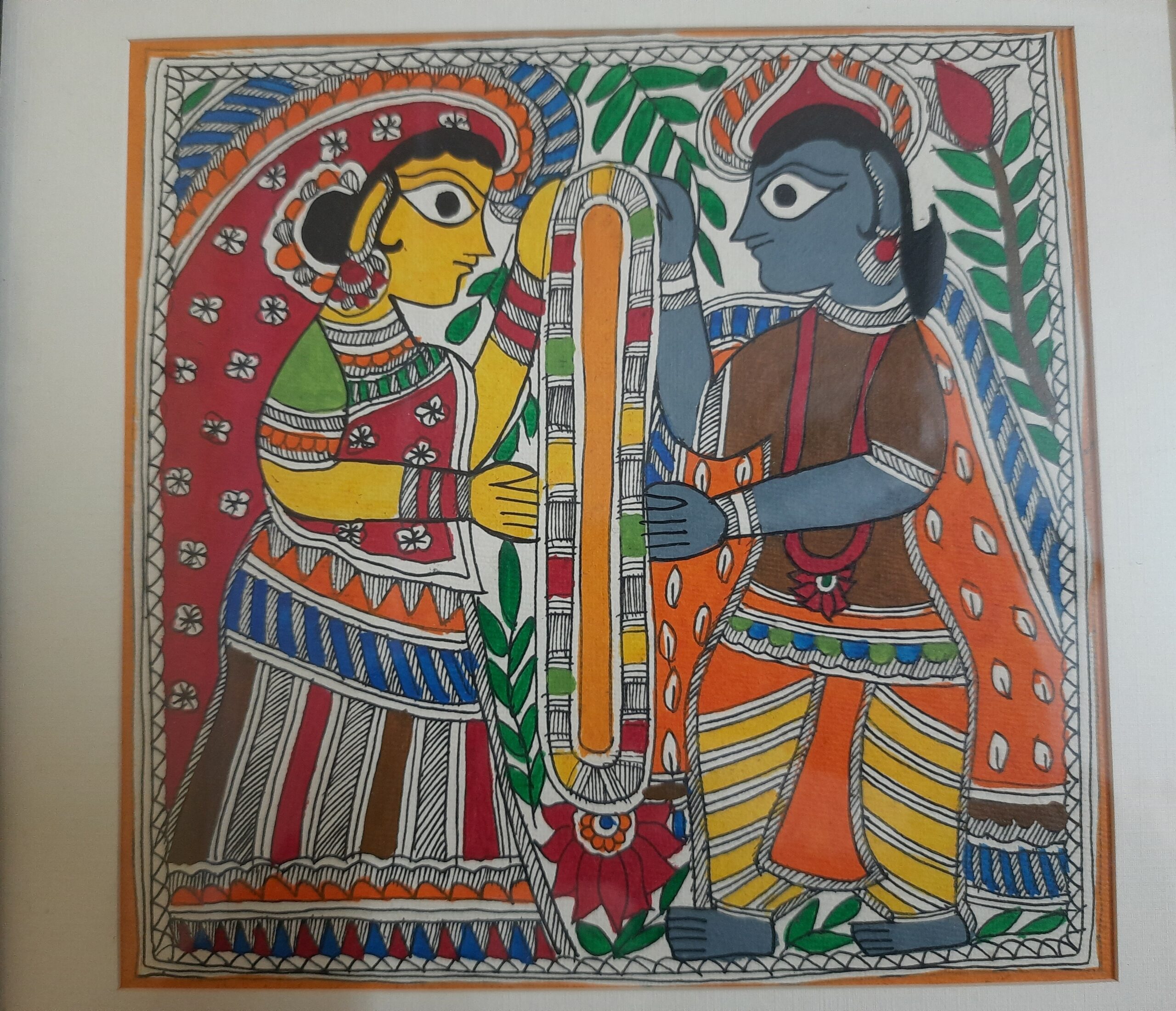
Initially categorised into Tantrik, Kohbar, Bharni, Godna, and Katchni styles, Madhubani paintings have now merged into contemporary art. Themes include Hindu deities, celestial bodies, royal courts, natural environment, and weddings, with intricate geometric patterns.
Initially categorised into Tantrik, Kohbar, Bharni, Godna, and Katchni styles, Madhubani paintings have now merged into contemporary art.
‘The handmade sheet is composed of 60% cotton and 40% paper. Then it is coated with cow dung (primarily), turmeric and neem which have antibacterial properties. This increases the shelf life of paintings to almost 100 years,’ explained Bhaskar.
According to Bhaskar, almost everyone in his region is familiar with making Madhubani painting. ‘We use natural colours and gums for the painting. Traditionally, the nib is made of bamboo, although twigs are also used. We source flowers from Kolkata, which are otherwise unusable, dry them and make paints,’ he added.
Art on a journey
Madhubani paintings moved from courtyards of houses to global level. It is embedded with global popularity, notably in Japan, Germany, France, and the USA. The Mithila Museum in Tokamachi, Japan, exhibits 1000 paintings which are curated by Madhubani art enthusiast Hashigawa. The Master Craftsmen Association of Mithila, founded in 1977 by an American, promotes artists through exhibitions. Madhubani art now adorns all government buildings in Madhubani city and several Indian trains, reviving its significance in the contemporary art world.
‘My mother, Mamata Jha, demonstrated live Madhubani painting at the G20 Summit held in Delhi’s Pragati Maidan,’ Bhaskar said with pride in his voice.
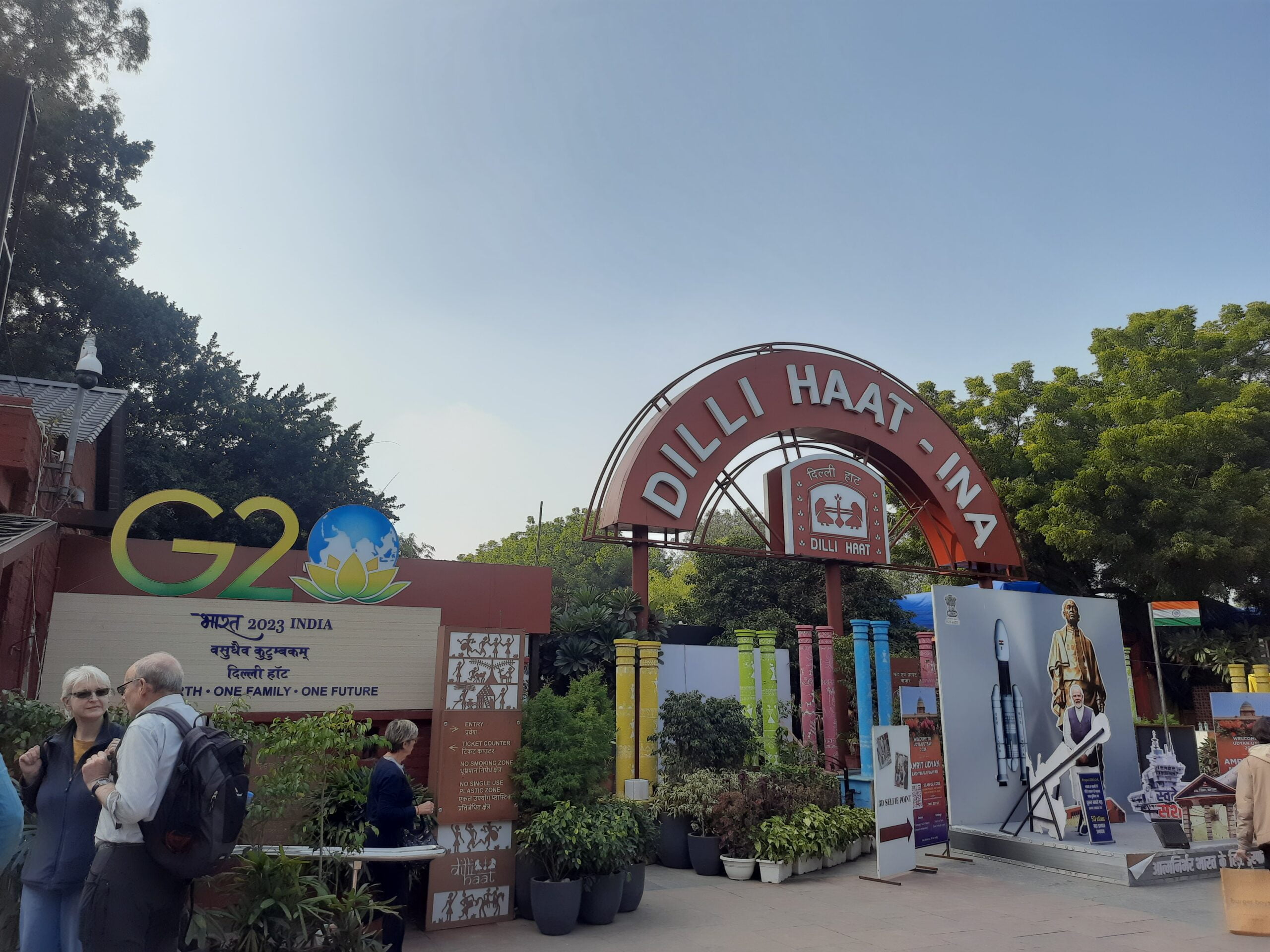
National Award-winning Madhubani painting artisan Shanti Devi also showcased Chandrayaan-3 Madhubani artwork at the G20 Art and Craft Exhibition Pavilion during the Summit.
But for 31-year-old Prabhakar Jha, another family member of Pushpa present at the exhibition, it was a different journey.
‘I am a chartered accountant who spent three years working in a corporate firm in Kolkata. However, I realised that the chaotic city life didn’t bring me happiness. That’s when I decided to quit my 9-5 job to contribute to the making and promotion of Madhubani paintings. Engaging in this art form allows me to stay connected to my culture while also uplifting members of our community,’ Prabhakar said.
The dissemination of Madhubani painting has empowered many women, offering them not just a means of livelihood but also challenging societal conventions.
The dissemination of Madhubani painting has empowered many women, offering them not just a means of livelihood but also challenging societal conventions. ‘We’ve established a committee of local artists who paint and we distribute their artwork at various venues. It’s noteworthy that 95% of them are women,’ Bhaskar stated with conviction over tea.
‘Ismai paisa itna nahi hai, par sath mai log bohot chalte hai (The money isn’t much, but many people have your back),’ he exclaimed.
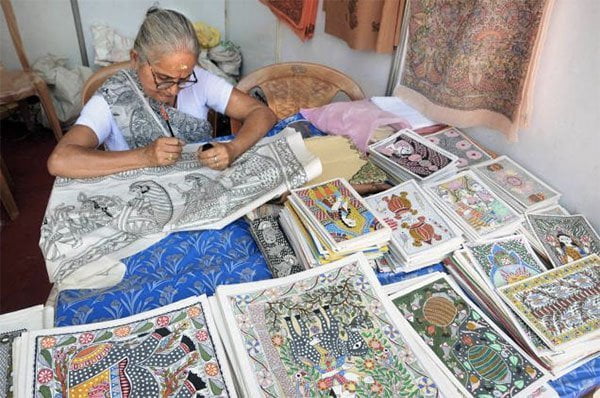
It was a ground breaker for literate or illiterate women from rural families, with varying levels of education or none at all, being globally recognised and honoured with prestigious awards like National Awards and Padma Awards.
Some of the recipients of Padma Shri Awards are Jagdamba Devi (1975), Sita Devi (1981), Ganga Devi (1984), Mahasundari Devi (2011), Bharti Dayal (2011), Godavari Dutta (2019), Dulari Devi (2021), and most recently, Shanti Devi Paswan & Shri Shivan Paswan (2024).
Art possesses transformative potential, notably evident in its capacity to provide economic relief to Mithila, a region plagued by political neglect, natural calamities, and financial deprivation. Beyond tangible transformations, it fosters social and cultural consciousness, contributing to a broader societal transition.
While Pushpa Devi breathes among the Madhubani art pieces, she assures her two children in Madhubani’s Jaynagar of a better education.
‘Maine zyada nahi padha, par bache dono school jate hai (I haven’t studied much myself, but both my children attend school)’, stated Pushpa before heading for lunch.
About the author(s)
Sakshi Srivastava is a freelance journalist. She writes on politics, culture and human rights.
